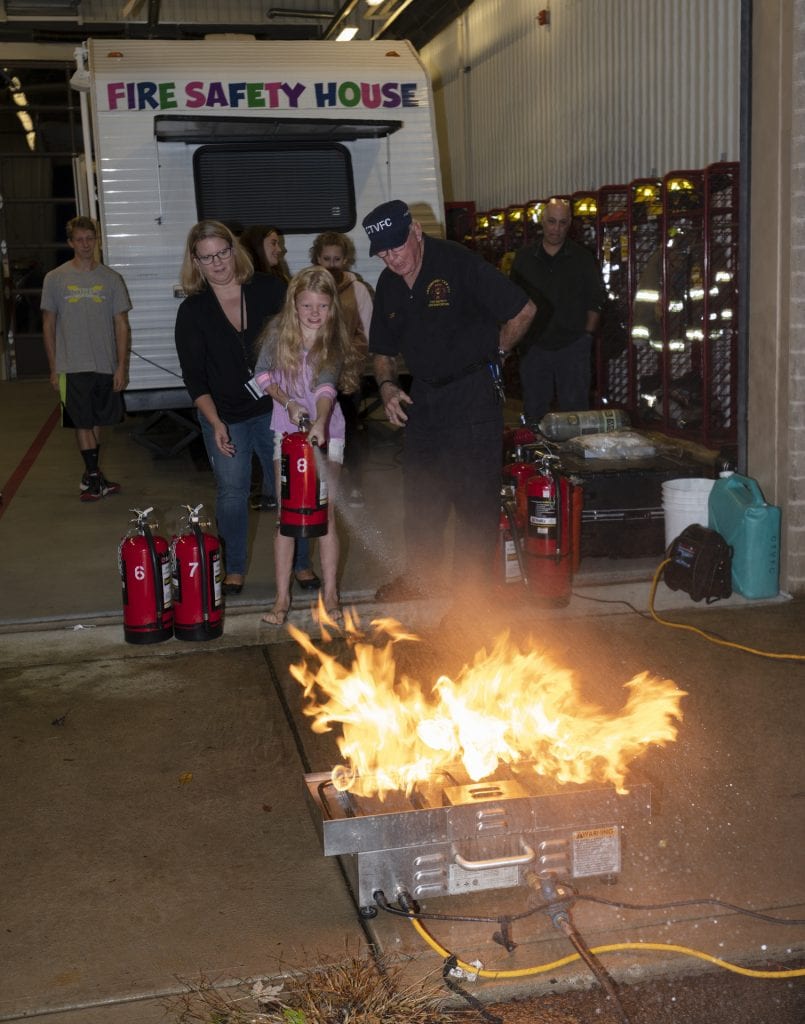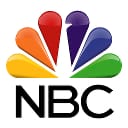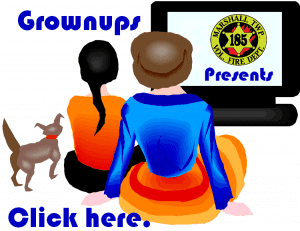Fire safety and prevention in the home can be improved with some common sense actions listed below.
Materials geared toward First Responders may be found on our Training Links page. However, some of the material may be of interest to the general public.

Fireworks Safety and Open Fire Burning
Click on the file below to learn more.
- Fireworks & Open Burning
Fire Safety and Prevention in the Home
- Most important, develop an escape plan. For this purpose, draw a simple sketch of the floor plan of your home, identify doors and windows.
- Furthermore, try and find at least two ways out of every room. The primary exit should be a door; a second exit could be a window. If you use a window, you may need an escape ladder. Most home improvement centers carry these.
- Before opening any door, you should feel the door and knob for heat using the back of your hand or wrist. If the door is hot do not open it. There may be fire on the other side. Consequently, use your second escape route.
- Smoke and heat rise. Accordingly, don’t walk. Instead crawl through the smoke staying low to the floor where the air cooler and more breathable. Additionally, if you have to crawl down stairs, go feet first. As a result, there is less of a chance you will fall.
- Meet at a predetermined place. It should be somewhere easy to remember and away from the house. For example, you could use the neighbor’s house, a telephone pole, or a road sign. Importantly, when picking a meeting place, it should be out of the route of incoming emergency personnel.
- Finally, after leaving the home call 9-1-1. Especially be sure to give the operator as much information as possible.
- Above all, NEVER go back into a burning building for anything. Let the professionals handle this task.
Fire Safety and Prevention – Top Causes of House Fires
Heating
- Have your furnace inspected annually and maintained by a qualified technician.
- Furthermore, ensure that your chimney is cleaned (free of creosote) and inspected annually.
- Keep portable heaters at least one meter away from anything that can burn (including curtains, furniture, and you).
- Portable heaters that burn flammable liquids such as kerosene can produce carbon monoxide. Consequently, make sure that the heater is used in a well ventilated area and that you have a carbon monoxide detector installed nearby.
Electrical
- Ensure that your electrical appliances don’t have loose or frayed cords/plugs.
- In addition, make sure that your outlets aren’t overloaded with plugs.
- Also, do not run electrical wires under rugs or heavy furniture.
- Thus, make certain that you are not overusing an extension cord. Furthermore, make sure that the extension cord is rated carry the electrical load of the items connected.
- Be careful about do-it-yourself electrical projects Many home fires are caused by improper installation. Accordingly, use a licensed electrician.
- Older homes and apartments can have inadequate wiring or aluminum rather than copper wiring. As a result, there is an increased fire and electrical risk.
- Some warning signs of inadequate wiring:
- You have to disconnect one appliance to be able to plug in another.
- You have to use extension cords or “octopus” outlets extensively.
- Fuses blow or circuit breakers trip frequently.
- Lights dim when you use another appliance. (On the other hand, AC units may cause momentary dimming. This is normal and not an issue.)
- Lamp shades and light fittings can build up heat if they are very close to light globes.
- For that reason, make sure that the bulb wattage is within the limits specified by the lamp or ceiling light can.
- Lamps that are knocked over easily are fire hazards. Accordingly, ensure that the lamp is either stable or secured to minimize the likelihood falling over.
Cooking
- When a pot or pan overheats or splatters grease, it can take seconds to cause a fire.
- Grease that accumulates around cooktop burners or in an oven can also cause a fire.
- Someone should remain in the kitchen when cooking, especially if using oil or high temperatures. In fact, most kitchen fires result because people get distracted and leave their cooking unattended.
- Keep combustibles (e.g. oven mitts, dish towels, paper towels) away from heat sources.
- An item on a hot stove or oven is a burn risk. Consequently, make sure that young children and pets are kept away.
- Make sure that the barbecue grill is positioned away from combustible materials. For example, avoid positioning against a wood deck railing.
- Accumulated grease on a barbecue grill creates a fire risk. Therefore, as part of regular maintenance, clean removable parts (inside and out) with soapy water.
- On a barbecue grill that uses gas (propane or natural) check annually that the connections and hoses don’t leak by coating these parts with soapy water and looking for bubbles when the gas is turned on.
- The smell of gas when the gas is turned off is a sign of a leak between the gas source and the barbecue grill. If you smell gas or If the hose looks frayed, then shut off the gas source leading to the grill until you replace the hose. Furthermore ensure that you use replace it with the proper type of hose.
- A hot barbecue grill is a burn risk. Consequently, make sure that young children and pets are kept away.
Bad Habits or Behavior
- Smoking and sleeping is a deadly combination. Accordingly, make the bedroom off-limits to smoking. In addition, supervise smokers who may become drowsy (i.e. on medication, drinking) or forget to extinguish their cigarettes.
- In addition, use large, deep ashtrays and never place an ashtray on or near anything that will burn.
- Further, check furniture for fallen cigarettes/embers. A butt can smolder for hours before causing furniture to burst into flames.
- In brief, the best prevention is to quit smoking. You will also lead a healthier, safer life.
- Children can cause fires out of curiosity. For example, they are inquisitive about what happens when something burns.
- They can cause fires out of mischief. For example, they’re angry or upset. They know fire is a major taboo to break in spite of the possible consequences.
- Therefore, kids may be involved in fire play if you find matches or lighters in their room/possession, smell sulphur in their room, and/or find toys or other personal effects that appear melted/singed.
Things Improperly Placed or Stored in the Home
- Keep candles in a sturdy holder on a level surface, away from combustible materials and out of the reach of children or pets. For example, avoid proximity to window drapes.
- If possible, blow out candles before leaving the room. (This is not always possible with religious candles.)
- Keep the tree away from all heat sources. For example, avoid radiators, furnace ducts, television sets and fireplaces.
- Christmas trees that are dried out are a fire risk. Therefore, keep the tree in a stand that will hold a gallon of water, and top it off up daily.
- In addition, check decorative lights before placing them on the tree, and discard any frayed or damaged lights/cords.
- Never place Christmas or Hanukkah candles near anything that could catch fire. For example, do not place candles on or near the Christmas tree.
- Flammable liquids: fuels, solvents, cleaning agents, thinners, adhesives, paints, and other raw materials can ignite or explode if stored improperly. The vapors that they produce can easily ignite from high temperatures or weak ignition sources (one spark of static electricity).
- Furthermore, stored rags soaked in flammable liquids are just as dangerous. Therefore, don’t store flammable liquids near a heating source.
- Accordingly, store these items in a cool ventilated area in approved containers. Storage outside the home is particularly recommended.
Fire Safety and Prevention – Smoke Alarms
- This type is generally more responsive to flaming fires.
- They have a small amount of radioactive material between two electrically charged plates, which ionizes the air and causes current to flow between the plates. When smoke enters the chamber, it disrupts the flow of ions, thus reducing the flow of current and activating the alarm.
- This type is generally more responsive to fires that begin with a long period of smoldering (called “smoldering fires”).
- They have a light source that is aimed into a sensing chamber at an angle away from the sensor. Smoke enters the chamber, thus reflecting light onto the light sensor; triggering the alarm.
- Ionization and photoelectric technologies are combined into a single enclosure. As a result, you have the best of both technologies.
- Each type has its advantage. Home fatal fires, day or night, include a large number of smoldering fires and a large number of flaming fires. Consequently, you can not predict the type of fire you may have in your home or when it will occur.
- Accordingly, for best protection, use both ionization and photoelectric smoke alarms or, alternatively, combination alarms that use both ionization and photoelectric technologies.
- Install a smoke alarm in every sleeping quarter.
- Additionally, put a smoke alarm on every floor of your home.
- Furthermore, place the smoke alarm as close to the center of the ceiling as possible and no closer than 4″ from side wall.
- Similarly, you may mount the smoke alarm on the wall at 4″-6″ from the ceiling.
Fire Safety and Prevention – Fire Extinguishers
- This section is under development.
Fire Safety Videos
Finally, get serious and watch these informative videos.
National Fire Protection Association Fact Sheets
Reproduced from NFPA’s website, National Fire Protection Association. © NFPA.
- Household Equipment
- Miscellaneous
Some of the contents reproduced above are with permission from the National Fire Protection Association.
Links to Other Sites Providing Fire Safety & Prevention Information
(Click on Title).
- National Fire Protection Association.
- HomeAdvisor – Wildfire Safety
- Fire Safety and Preparedness for Your Home, Deck, and Property (Submiited by Eli Stevens)
- Creating a Family Fire Escape Plan (Submitted by Amy and Lisa, Hastings Recreation Center)
- How Climate Change Fuels Increasing Wildfire Disasters (Submitted by Sohana and Ruby)
- Click on one of the logos on the bottom of any video page.
These are external websites. Therefore, you will be leaving the MTVFD website. Furthermore, MTVFD isn’t responsible for the information on these sites nor endorses any of the goods or services offered.


